
Eleanor was a British Thoroughbred racehorse bred by Charles Bunbury and was the first female horse to win The Derby. Eleanor also won the 1801 Epsom Oaks among many other races before retiring from racing at age eight to become a broodmare for Bunbury. She produced the stallion Muley, which in turn sired the mare Marpessa and the influential stallion Leviathan which was exported to the United States in the early nineteenth century. Through the produce of her daughter Active, Eleanor is present in the pedigrees of 19th-century American Standardbred racehorses.

Phantom was a British Thoroughbred racehorse and sire. In a career that lasted from April 1811 to April 1813 he ran ten times and won seven races. In the summer of 1811 he proved himself one of the best British colts of his generation, winning the Derby on his second racecourse appearance. He continued to race with considerable success for two more years, mainly in match races. He was retired to stud in 1814 and became a successful sire of winners before being exported to Mecklenburg in 1832.

Cardinal Beaufort was a Thoroughbred racehorse that won the 1805 Epsom Derby. Cardinal Beaufort raced until he was six-years-old, winning eight races before his death in late 1808. Cardinal Beaufort was bred by the Earl of Egremont who raced him during his early career. Cardinal Beaufort was sold frequently in his later racing career, changing hands seven times in the last two years of his life.
Azor was a British Thoroughbred racehorse. In a career that lasted from April to October 1817 he ran five times and won two races. In the summer of 1817 he created a 50/1 upset by winning The Derby after being entered in the race to act as a pacemaker for a more highly regarded stable companion. The rest of his form was well below top class, with his only other success coming when he was allowed to walk over at Newmarket.
Pan was a British Thoroughbred racehorse and sire. In a career that lasted from June 1808 to July 1814 he had six different owners, ran twenty times and won nine races. His most important success came on his only appearance as a three-year-old in 1808 when he won the Derby as a 25/1 outsider. Pan won another eight races over the next four seasons, running mainly in match races at Newmarket. He raced for two more years without success before being retired as a nine-year-old in 1814.
Ditto (1800–1821) was a British Thoroughbred racehorse and sire. During a racing career that lasted from May 1803 to April 1807 he was lightly campaigned, running six times in five seasons and winning four races. In the summer of 1803 he proved himself one of the best British colts of his generation, by winning Derby on his only appearance on the season. He went on to win two important races at Newmarket and a King's Plate at Guildford. Ditto was retired to stud in 1808 and had some success as a sire of winners.
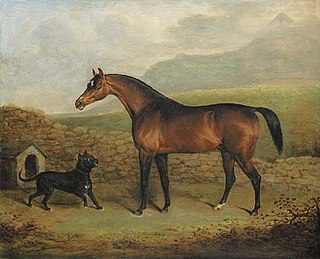
Pope, also known as Waxy Pope and The Sligo Waxy, was a Thoroughbred racehorse that won the 1809 Epsom Derby and was a leading sire in Ireland. Pope was the first Epsom Derby winner produced by his sire Waxy, who would go on to sire three more Derby winners and three winners of The Oaks. Pope was a half-brother to the prolific broodmare Penelope, the dam of the influential stallions Whisker and Whalebone who were also sired by Waxy. Pope died on 29 August 1831 at Clearwell.
Neva was a British Thoroughbred racehorse, which in 1817 became the first filly to win both the 1000 Guineas at Newmarket Racecourse and the Oaks at Epsom Downs Racecourse. In a racing career which lasted from April 1817 until May 1818 she ran four times and won twice.
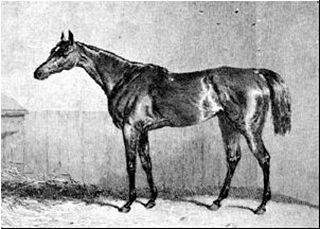
Oxygen was a British Thoroughbred racehorse and broodmare who won the classic Oaks Stakes at Epsom Downs Racecourse in 1831. In a racing career which lasted from July 1830 until April 1833 she won eight of her fifteen races and finished second on five occasions. Oxygen's Oaks was the last of twenty classic wins for her owner George FitzRoy, 4th Duke of Grafton.
Pelisse (1801–1810) was a British Thoroughbred racehorse who won the classic Oaks Stakes at Epsom Downs Racecourse in 1804. In a long racing career which lasted from April 1804 until April 1809 she had at least six different owners and ran thirty-five times, winning thirteen races and finishing second on eleven occasions. The Oaks was her second race and first win. In the succeeding years she competed at distances from five furlongs to four miles, racing mainly at Newmarket Racecourse, often in match races. She died in 1810, a year after being retired from racing.
Selim (1802–1825) was a British Thoroughbred racehorse. He was owned by the Prince of Wales, D. Radcliffe and later Arthur Shakespear. After retiring from racing he became a successful stallion and was British Champion sire in 1814. His progeny included Azor, Medora, Sultan and Turquoise.
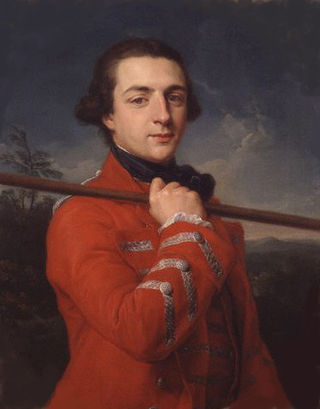
Prunella was a British Thoroughbred racehorse. Raced from 1791 to 1794, she won three races including a Sweepstakes of 200 guineas each at Newmarket. She was retired to stud and became an influential broodmare, foaling Epsom Derby winner Pope and Epsom Oaks winner Pelisse. Her daughters also went on to become top broodmares in their own right. She was owned by Augustus FitzRoy, 3rd Duke of Grafton.
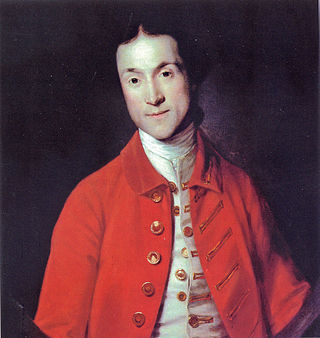
Nike was a British Thoroughbred racehorse. She won three of her five starts, including the Oaks Stakes in 1797. She was owned by Richard Grosvenor, 1st Earl Grosvenor, and later became a broodmare, with three of her foals placing in Classic races.

Pope Joan (1809–1830) was a British Thoroughbred racehorse. She won four of her eight starts before being retired to stud, where she became a successful broodmare. She foaled 1000 Guineas winner Tontine, 2000 Guineas winner Turcoman and Epsom Oaks winner Turquoise. Pope Joan was bred by Augustus FitzRoy, 3rd Duke of Grafton and after his death was owned by his son George FitzRoy, 4th Duke of Grafton.

Penelope (1798–1824) was a British Thoroughbred racehorse. She won sixteen of her twenty-four races, including two Oatlands Stakes, the Jockey-Club Plate and she beat Oaks and Derby winner Eleanor. She was bred and owned by Augustus FitzRoy, 3rd Duke of Grafton. After retiring from racing she became an influential broodmare, foaling Derby winners Whalebone and Whisker and 1000 Guineas winner Whizgig.
Sorcerer (1796–1821) was a British Thoroughbred racehorse. He ran mainly at Newmarket and won fifteen of his twenty-one races, including the October Oatlands Stakes in 1800. After retiring from racing he became a successful stallion and was the leading sire in Great Britain and Ireland for three years. Amongst his progeny were Morel, Maid of Orleans, Wizard, Soothsayer, Sorcery, Trophonius, Comus and Smolensko. He was bred and owned by Sir Charles Bunbury and died in 1821.
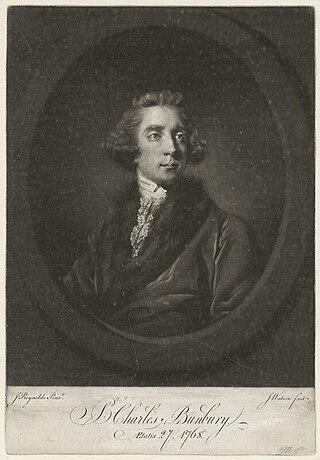
Young Giantess (1790–1811) was a British Thoroughbred racehorse and broodmare. She failed to win any of the five races she contested, but became a successful broodmare for Sir Charles Bunbury. She foaled the successful sire Sorcerer and Derby and Oaks winner Eleanor.
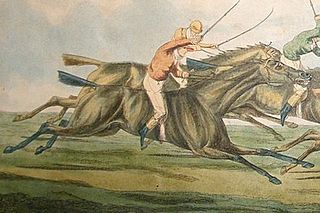
Pindarrie was a British Thoroughbred racehorse. He raced five times and won the Riddlesworth Stakes and 2000 Guineas Stakes. He was owned by George FitzRoy, 4th Duke of Grafton, and trained by Robert Robson. He only raced in 1820 and was then sent to India.
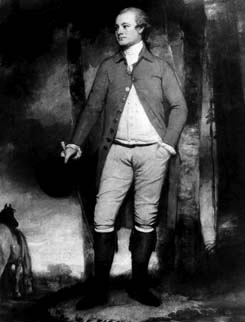
Bridget (1776–1798) was a British Thoroughbred racehorse who won the inaugural running of the Oaks Stakes in 1779. She was bred and owned by Edward Smith-Stanley, 12th Earl of Derby, for whom she produced five foals as a broodmare.
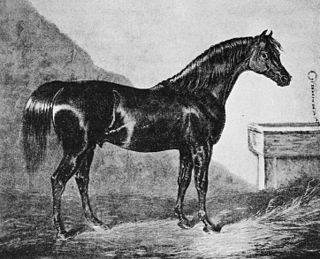
Walton was a British Thoroughbred racehorse. He raced until he was eight years old, winning sixteen of his twenty five races. His first race was in 1802, with his first big win, the Third Class of the Oatlands Stakes, coming in 1803. He went on to win eight King's Plates and recorded wins over several leading racehorses of the time. He was owned by Sir Hedworth Williamson throughout his racing career. Walton later became a successful stallion and was champion sire of Great Britain twice. He sired the Derby winner Phantom, 2000 Guineas winner Nectar and St. Leger winner St Patrick.














